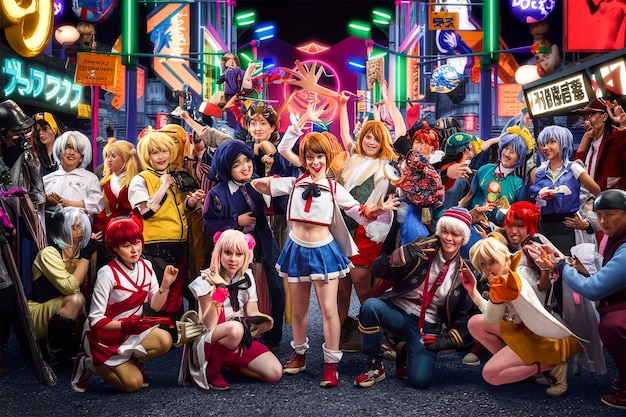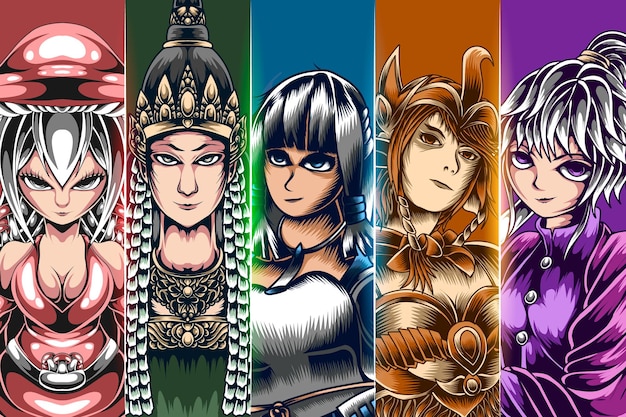The evolution of anime: From niche to global phenomenon

The evolution of anime from a niche interest to a global phenomenon shows how this art form has adapted through technological innovation, diverse storytelling, and international distribution.
Its unique artistic style and compelling narratives have captivated audiences worldwide. From its origins in Japan, anime has grown into a globally celebrated medium, engaging viewers across continents and generations.
This journey highlights not only the evolution of anime as an art form, but also its ability to embrace new technologies, genres, and cultural trends.
The humble beginnings: animation’s roots in Japan
The origins of anime can be traced back to early 20th-century Japan, where animators experimented with techniques inspired by Western animation.
The evolution of anime began here, with short, experimental films often used for propaganda or educational purposes. These early efforts laid the foundations for a unique art form, blending cultural sensibilities with ambitious artistic goals.
After World War II, Japan’s animation industry expanded rapidly. Studios and artists, fueled by a desire for creative expression and economic recovery, began producing longer-form content.
This period was critical in defining the visual style, narrative structure, and thematic depth that would come to distinguish Japanese animation and propel the evolution of anime.
Pioneers and early influences
Pioneers like Osamu Tezuka, the “God of Manga,” played a pivotal role. Tezuka introduced industrial animation techniques inspired by Disney, increasing efficiency and making television animation feasible.
His works, such as “Astro Boy,” captured domestic and international audiences, marking a key step in the evolution of anime.
Key contributions included
- Revolutionizing production methods and popularizing iconic character designs.
- Early TV series that built new fan bases and normalized long-form storytelling.
- Government recognition of anime as a cultural export, spurring further investment.
- Integration of Japanese myths and social commentary into narratives.
These developments shaped anime’s artistic and commercial trajectory, setting the stage for the evolution of anime into a medium distinct from Western animation.

The rise of unique artistic styles and narrative depth
As anime matured, it developed a unique artistic identity. The diversity of animation styles, sophisticated character designs, and complex storytelling set it apart.
Unlike Western cartoons aimed primarily at children, anime explored themes across genres, appealing to audiences of all ages.
The evolution of anime during this period reflected not only aesthetic innovation but also narrative experimentation.
Enhanced techniques in color, camera movement, and character animation created immersive experiences.
This freedom allowed creators to push boundaries, making the evolution of anime synonymous with artistic sophistication and emotional depth.
Genre diversification and thematic complexity
The explosion of genres fueled anime’s growth. Mecha series like “Mobile Suit Gundam” brought realism and political intrigue, while “Dragon Ball” popularized action-packed narratives, and “Sailor Moon” shaped the magical girl genre.
Such variety ensured the evolution of anime could appeal to broad audiences. Mature themes, intricate character arcs, visual innovation, and rich music contributed to the anime’s depth.
Films from Studio Ghibli explored environmental, social, and philosophical concepts.
]This commitment to narrative and aesthetic excellence solidified anime’s global reputation and furthered the evolution of anime into a respected storytelling medium.
Technological advancements and global distribution
The late 20th century saw significant technological innovations. The shift from cell to digital animation improved efficiency and expanded creative possibilities.
Computers enabled complex effects and refined visuals, accelerating the evolution of anime.
The rise of the internet fostered fan communities that spread anime globally, creating demand and informal distribution networks.
This grassroots enthusiasm propelled international licensing and localized releases, advancing the evolution of anime into a worldwide phenomenon.
The digital age and streaming services
Streaming platforms revolutionized anime access. Services like Crunchyroll, Funimation, Netflix, and Hulu made content available to global audiences instantly.
The evolution of anime benefited from global simulcasts, multilingual subtitles, and online fan communities, enabling synchronized worldwide viewership.
Technological integration, mass accessibility, and interactive fan engagement cemented the evolution of anime as a globally dominant cultural force.
Cultural impact and mainstream acceptance
Anime transitioned from niche interest to mainstream influence. Its presence in fashion, music, video games, and memes demonstrates the evolution of anime into a pervasive cultural phenomenon.
Awards recognition, such as Miyazaki’s “Spirited Away” winning an Academy Award, reinforced anime’s legitimacy and artistic merit, highlighting the evolution of anime as a global storytelling medium.
Influence on global media and fan culture
Anime inspired Western animation, film, and gaming industries, reflecting the evolution of anime in cross-media innovation. Fan communities, cosplay, and conventions created vibrant global cultures.
Academic studies, merchandising, and interactive media strengthened its cultural footprint, emphasizing the evolution of anime as both art and social movement.
The ever-evolving landscape: challenges and future directions
Despite its success, anime faces production pressures, labor concerns, and evolving market expectations.
Innovative models, international co-productions, and streaming investment are helping sustain growth, ensuring the evolution of anime remains dynamic and resilient.
Sustainability and innovation in production
Technological advancements like CGI, VR, and AR point toward new frontiers for anime. Maintaining artistic integrity while embracing innovation ensures continued relevance.
The evolution of anime thrives on unique narratives, immersive visuals, and global collaboration, guaranteeing its ongoing transformation.
Artist welfare, diverse storytelling, and international partnerships will shape future trajectories, reinforcing the evolution of anime as a medium capable of transcending borders and inspiring audiences worldwide.
| Key Aspect | Brief Description |
|---|---|
| 🚀 Early Growth | Post-WWII expansion and pioneers like Osamu Tezuka driving initial popularization. |
| 🎨 Artistic Innovation | Development of unique styles, diverse genres, and profound narrative depth distinguishing anime. |
| 🌐 Global Reach | Enabled by digital animation, internet fan communities, and widespread streaming services. |
| 📈 Cultural Influence | Mainstream acceptance, impact on global media, and vibrant fan culture. |
Frequently asked questions about anime’s evolution
The advent and widespread adoption of streaming services, coupled with the internet’s ability to foster international fan communities, were pivotal. These platforms dissolved geographical barriers, making diverse anime content easily accessible to a worldwide audience, significantly boosting its global consumption and cultural impact.
Osamu Tezuka, often called the “God of Manga and Anime,” revolutionized the industry by introducing American-inspired industrial animation techniques. This method allowed for mass production of animated series like “Astro Boy,” making anime more economically viable and widely accessible to television audiences, laying vital groundwork for its future.
Anime often features more complex narratives, explores a wider range of genres catering to all age groups, and emphasizes deep character development. Its distinct artistic styles, dynamic visual storytelling, and frequent exploration of philosophical or social themes differentiate it from many Western productions, which historically focused more on children’s entertainment.
Technological advancements, particularly the shift to digital animation, revolutionized production efficiency and visual effects. The internet and streaming platforms also facilitated global dissemination, enabling simulcasts with subtitles and fostering vibrant international fan communities. This evolution has significantly expanded anime’s reach and impact worldwide.
Anime has become a significant global cultural force, influencing fashion, music, video games, and Western animation. It has fostered passionate international fan bases, leading to massive conventions and widespread engagement through cosplay and fan art. Its critical acclaim, including Oscar wins, further cements its role as a universally recognized art form.





